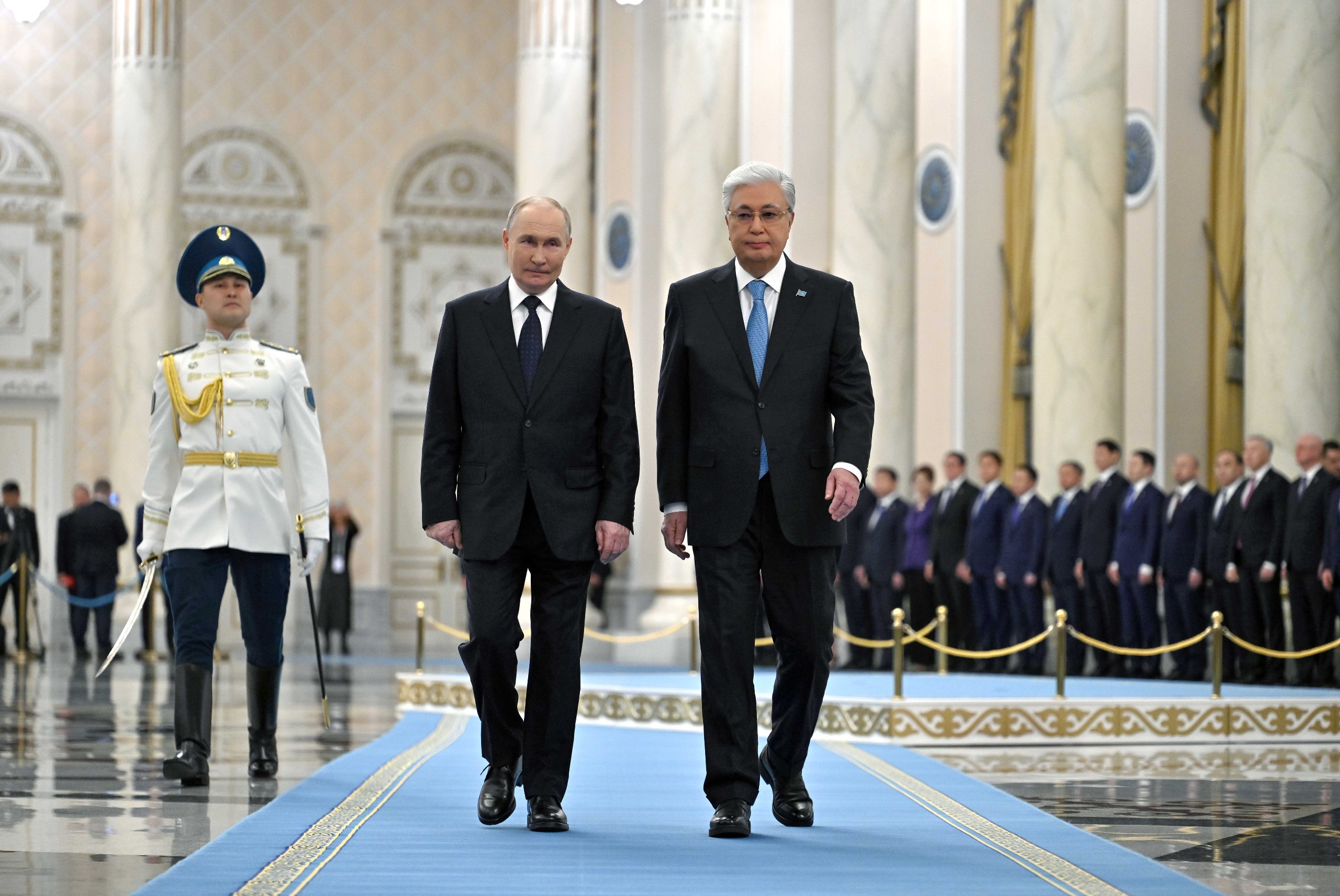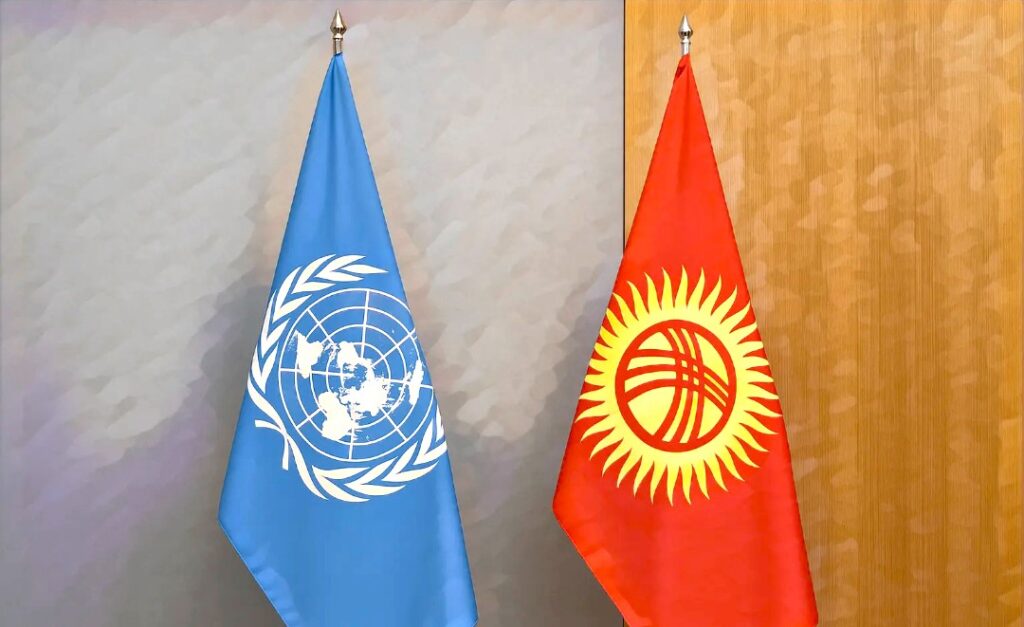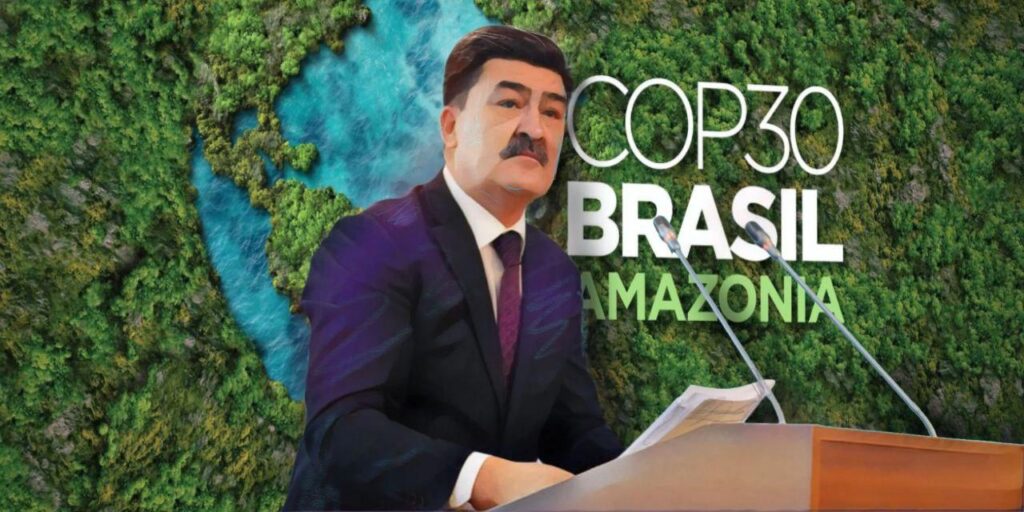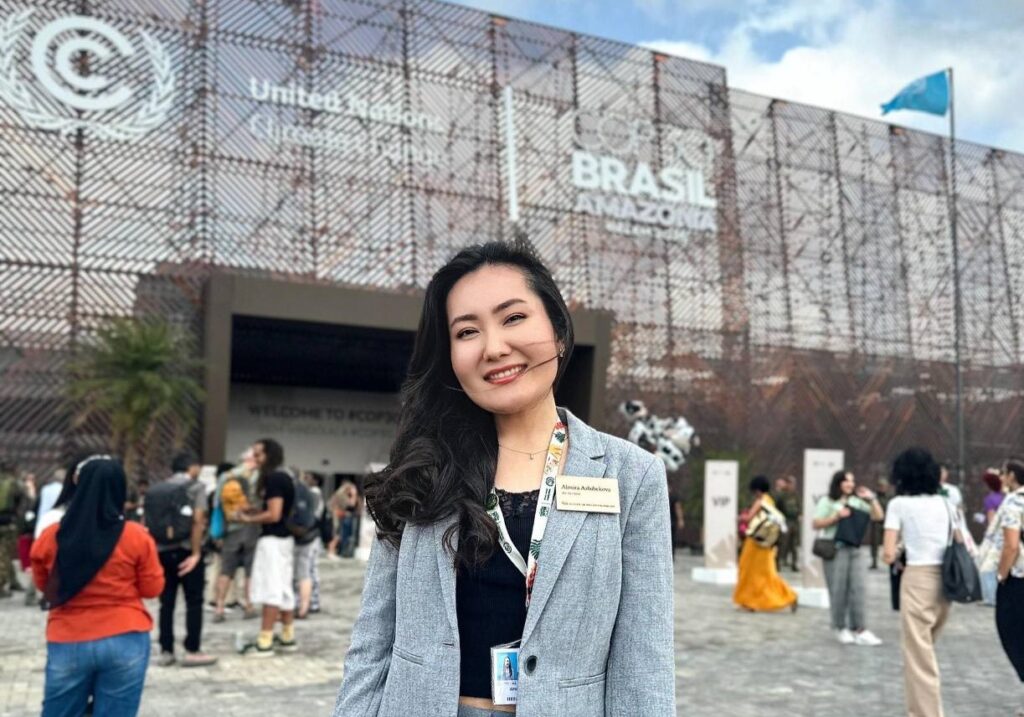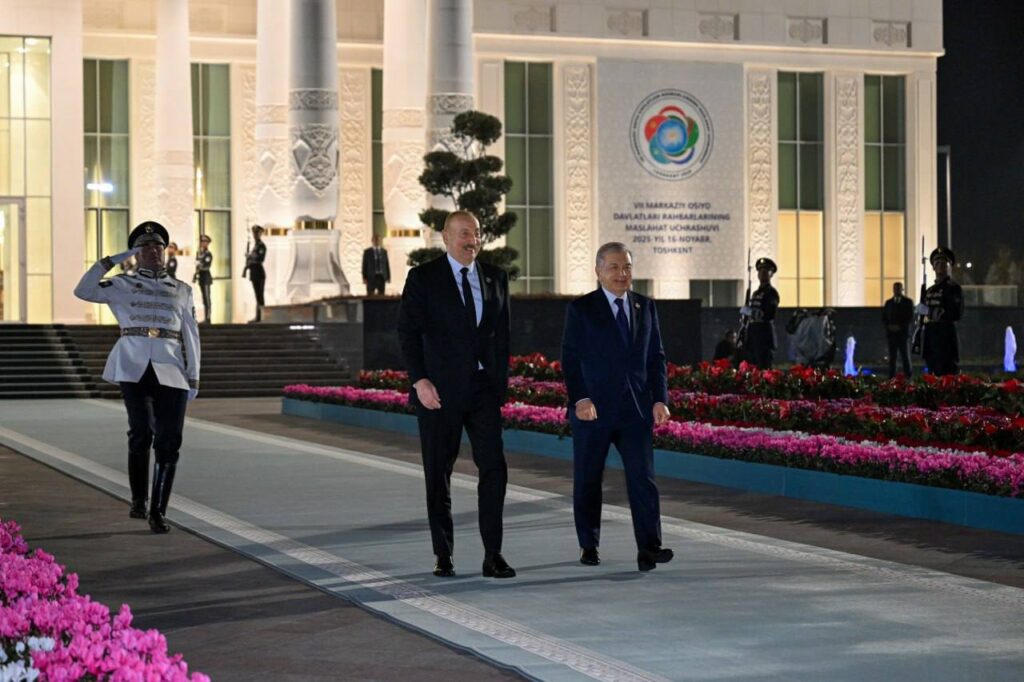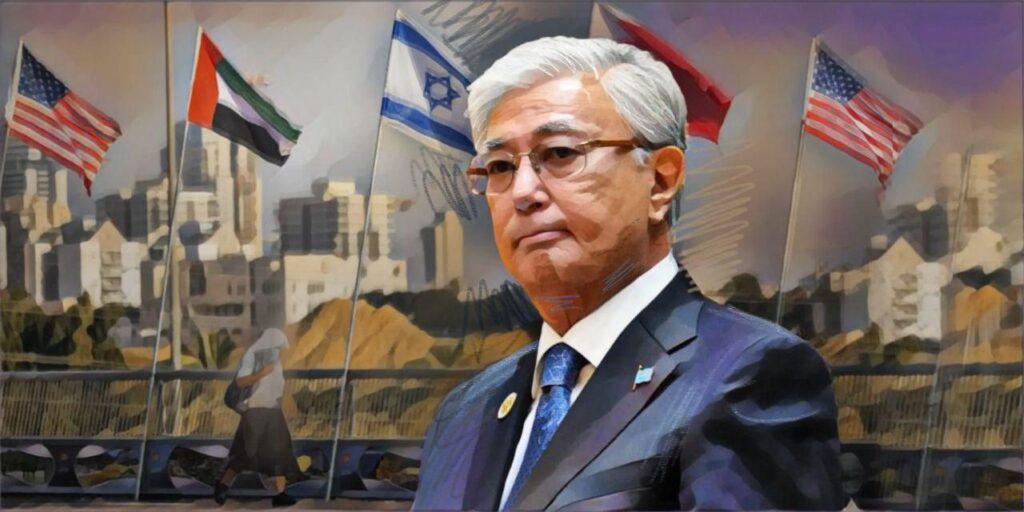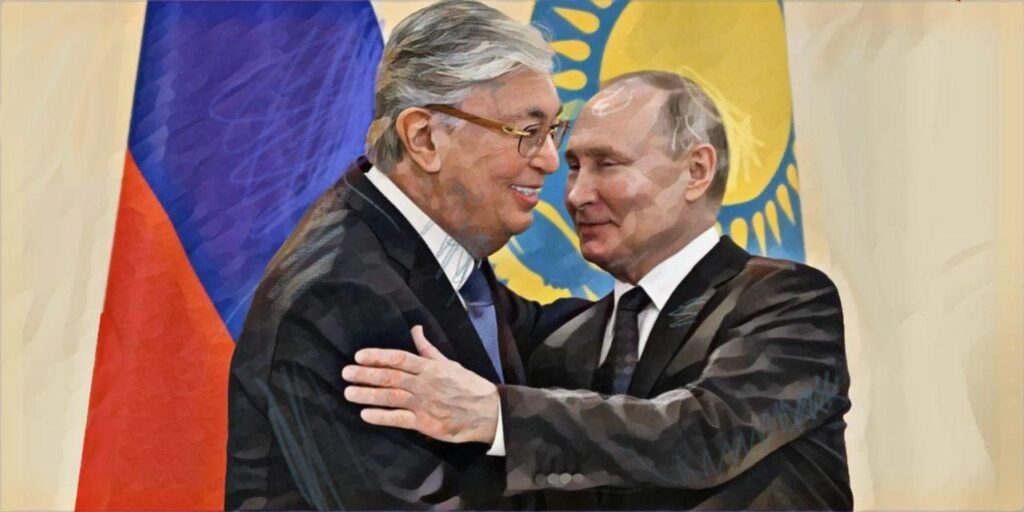On November 27, Russian President Vladimir Putin arrived in Astana for a state visit. He was met at the airport by Kazakh President Kassym-Jomart Tokayev. The streets of Astana, along Putin’s motorcade route, were adorned with Russian flags, creating a ceremonial backdrop for a meeting touted as a symbol of strategic partnership between the two nations.
At the Akorda Presidential Palace, Tokayev hosted a reception for Putin that blended official decorum with cultural displays. The program featured children reciting poetry and participation in a collaborative painting led by renowned Kazakh artist Assol (Asel Sabyrzhankyzy), who named the artwork Bridge of Friendship and presented it to Putin.
However, not all Kazakhstanis welcomed the visit with enthusiasm. Some citizens, concerned by Russia’s imperial overtones or sympathetic to Ukraine, expressed their dissent through an online flash mob. A banner at Astana Airport referring to Putin as “Your Excellency” sparked outrage among critics, who viewed it as excessive deference. Political analysts later clarified that the term has been consistently used for other high-level visitors to Kazakhstan.
Putin’s state visit, described as a rare diplomatic event typically occurring once per presidential term, was notably proposed by Kazakhstan. During a press briefing, Putin remarked, “At your suggestion, this visit was given the status of a state visit, but I want to note that the solemn protocol did not prevent us from working productively, as is characteristic of our meetings.”
Heightened Security Amid Geopolitical Tensions
The visit came against the backdrop of growing geopolitical instability. Less than a week earlier, on November 21, Tokayev had instructed government agencies to heighten security following Russia’s test of the Oreshnik ballistic system in Ukraine. This context, paired with the substantial security measures surrounding the state visit, led observers to speculate that Russia’s own security concerns may have influenced the format.
The official discussions were framed by frequent references to “strategic partnership” and the “geopolitical situation.” These themes culminated in a joint declaration entitled “Joint Statement of the President of the Republic of Kazakhstan and the President of the Russian Federation on Deepening Strategic Partnership in the New Global Order.” The statement, structured in three main sections, outlined bilateral cooperation in political, economic, and security domains.
Ambiguities in Counter-Terrorism and Political Statements
The declaration’s political section raised some eyebrows, particularly the clause condemning recent “terrorist acts” in Russia and pledging closer intelligence cooperation to combat such threats. Questions remain over whether Kazakhstan considers only incidents like the Crocus City Hall attack on the outskirts of Moscow as terrorism, or whether the term extends to military actions tied to the Ukraine conflict.
Another noteworthy point was the denunciation of “irresponsible statements” by public figures that undermine mutual respect between the two nations. This has been a sensitive issue for Kazakhstan, which has frequently faced provocative rhetoric from Russian propagandists and certain lawmakers. Tokayev himself rebuffed such remarks at the 2022 St. Petersburg International Economic Forum, firmly rejecting recognition of the Donetsk and Luhansk People’s Republics.
Economic Vision and Strategic Transport
The economic section of the joint statement emphasized resilience amid global sanctions and highlighted increased trade turnover between Russia and Kazakhstan. A notable commitment was the acceleration of the ambitious international transport corridor connecting Belarus, Russia, Kazakhstan, Uzbekistan, Afghanistan, and India. First formalized in 2023, the corridor represents a strategic shift in Russia’s economic focus.
Russian political analyst Yuri Solozobov offered insight into the underlying rationale for such a pivot. He described Kazakhstan as Russia’s “key geostrategic partner” in building a new economic macro-region in South Asia. “Europe is clearly alienating us, and China is not native to Russia. We need to move towards Turkey, Iran, Iraq, and Afghanistan. And instead of the St. Petersburg ‘window to Europe,’ it is high time to cut a corridor to India,” Solozobov stated.
This perspective underscores how Kazakhstan’s geographic position and cooperative ties with Russia make it indispensable to Moscow’s long-term plans for diversifying its trade and geopolitical alliances. By deepening connectivity in the region, Russia is seeking to bolster its’economic resilience and reduce reliance on increasingly hostile Western markets.
Missing Topics
Despite the comprehensive scope of the 36-point joint statement, certain contentious issues were conspicuously absent, including Russia’s push for nuclear energy collaboration in Kazakhstan. Reports suggest that Rosatom’s chief met with Tokayev just days earlier, raising questions about whether these discussions were deliberately omitted from public disclosures.
Looking to the Future
The visit’s most secretive element was the one-on-one meeting between Tokayev and Putin, held without foreign ministers or other officials. Their private discussion reportedly began as the two leaders traveled together in the same limousine to the Akorda. While the details remain unknown, the closed format suggests a high degree of mutual trust – or at least an acknowledgment of the stakes involved.
In the end, Putin’s visit to Kazakhstan resembled a carefully choreographed scene from a geopolitical drama. What unfolds next will determine whether the spectacle signified a genuine strengthening of ties or merely concealed deeper tensions between the two strategic partners.
